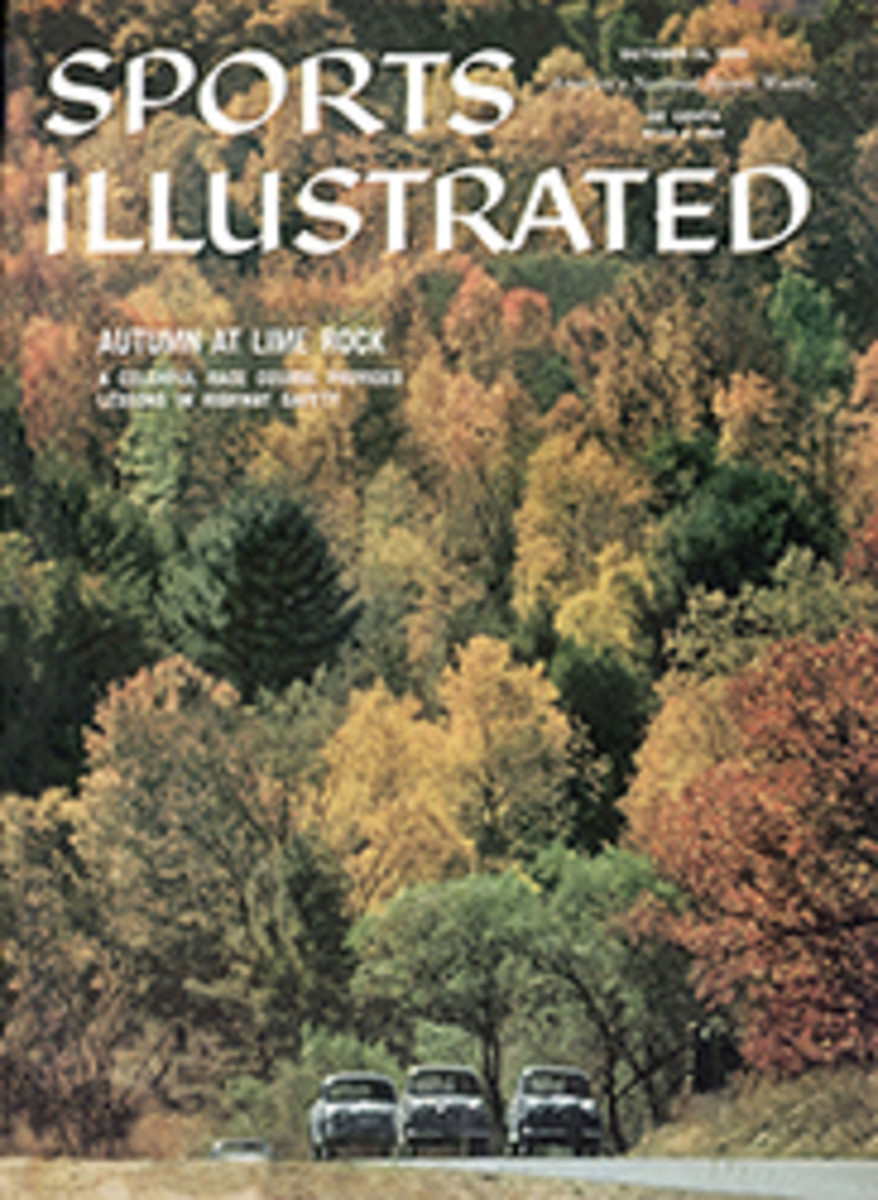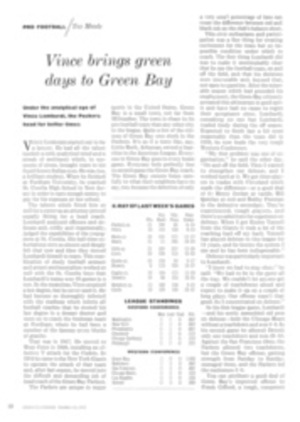
ADVICE FROM THE COCKPIT
From 20 years of accident-free highway driving and 11 years on the race track, John Fitch has culled these rules for safety and survival:
FIRST AND FOREMOST: Always operate within the limits of controllability of your car. For example:
ON CURVES: In judging your speed around a curve, always leave a margin which will permit you to tighten your turn. You may have to do so if an oncoming car has swung out onto your side of the road; and tightening your turn if you are going too fast may bring on a slide.
IN SLIDES: If you start a slide, don't panic. A sliding car can still be controlled with proper use of wheel, brake and throttle. Don't be afraid to use the wheel drastically. Steer into the slide, back off the throttle, don't use the brakes until the car has straightened out.
IN REVERSE: A hard slide may leave you going backward. This changes your steering: the front wheels try to caster and, of course, you are steering from the back now rather than the front. Try backing up fast (over 25 mph) in some safe spot to acquaint yourself with the swerving phenomenon of a car in this situation.
CHANGING ROAD SURFACES: Always feel out a wet or otherwise slippery road by a cautious stab or two at the brake to see if the wheels slide readily. Remember, too, that a patched macadam road is more slippery than a newly paved or concrete one, and gravel, sand and cobblestones more treacherous still.
CHANGING ROAD WIDTHS: Cut your speed if the road or lane narrows. Any decrease in width decreases your margin of maneuver.
EMERGENCY STOPS: Pick an empty stretch of road and try some "panic stops." Slam on the brakes and note at what point the wheels lock, and whether front or back wheels lock first. Try this in a straight line, then in a slight swerve. Be prepared to release the brake quickly in the slide to regain steering control. Learn to control the car in an emergency stop; it can mean the difference between a sure crash and a bad scare.
GOING OFF THE ROAD: Don't be afraid to run off the road; in fact, think in terms of doing so in an emergency. Watch for places where you can "hit the ditch" safely in a pinch. There is almost always some place left to go if you retain control, at least enough to turn a full head-on collision into a less disastrous sideswipe.
KEEP YOUR DISTANCE: Never crowd another car, from behind or in any other way. In traffic, always keep a loophole for escape. If the car ahead stops suddenly the room you have to turn out is your margin of safety. Hoard it; don't be provoked into giving up an inch of it.
IF YOU CAN'T STOP: In a serious emergency, like brake failure, slow the car by bumping guard rails, stone walls, small trees or hedges; or put it in the ditch if there is one. On a city street you can nudge it against parked cars. Eventually you will stop, with scratched paint and dented fenders and perhaps some bruises, but alive.
DON'T OVERLOAD: Every car is built to carry a certain maximum load. Beyond it, springs and shock absorbers are overstrained and the car becomes unstable. A heavily loaded car will change its characteristics; be prepared for this. If you want to carry a heavy load, add 25% to your tire pressures.
PRACTICE FOR SAFETY: If possible, try out your car in some large open space like an empty parking lot. You will learn that it is not only fun to know how to control your car; it also adds greatly to your peace of mind.
PHOTO
ABOUT THE AUTHOR
John Fitch, writer as well as racer, has won respect for his articles on motor sports and highway safety. Adventure on Wheels, his autobiography, written with William F. Nolan, will be out soon (G. P. Putnam's Sons, $4.50).

